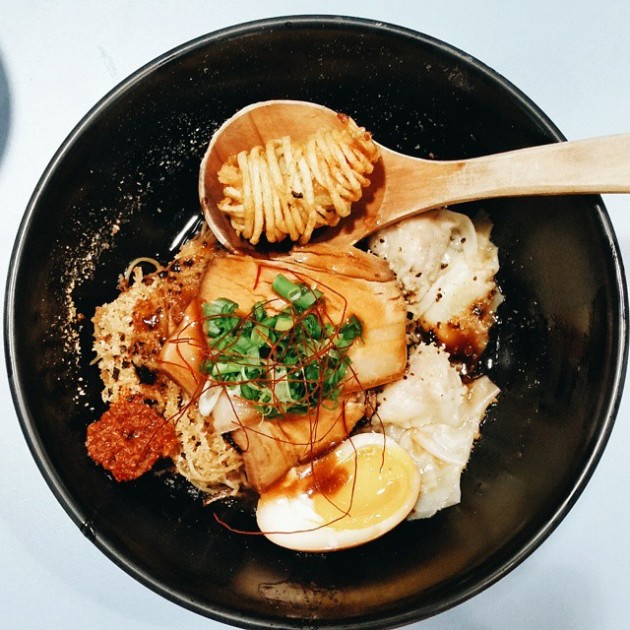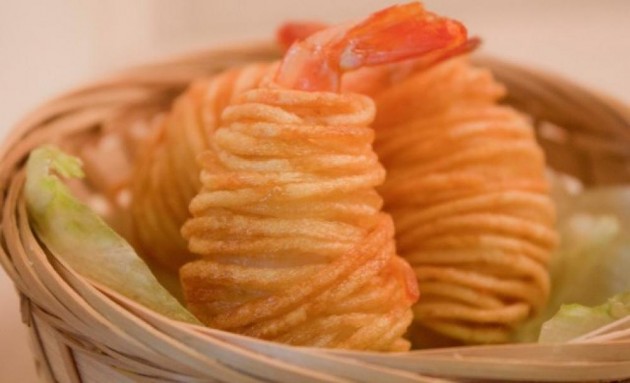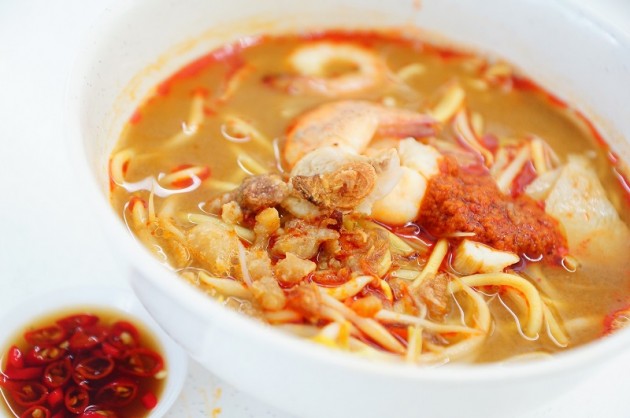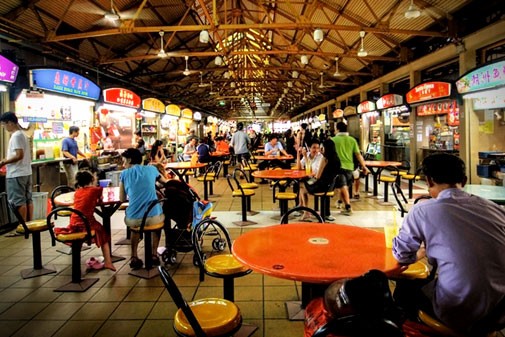Singapore’s Young Hawkers
One of my most memorable experiences growing up was weekend breakfasts at hawker centres with my family. Our usual haunts were Ang Mo Kio or Toa Payoh, where I’d have my favourite bowl of fishball noodles or nasi lemak.
Hawker centres are precious to many Singaporeans – it is where we go to for cheap and good local food or bond with our kakis over midnight supper. Hawker centres are a part of our culture – you can’t find them anywhere else – and as much as hawker centres are uniquely Singaporean, Singapore also wouldn’t be the same without hawker centres.
However, the current generation of hawkers will retire, and a legacy might be lost. Young people are reluctant to be hawkers, and young hawkers themselves face challenges of their own. We sat down with 2 young hawkers to learn more about their lives.
A Noodle Story – Gwern, 34 y/o, working for 2 years
A Noodle Story is owned by Gwern and Ben, both of whom were classmates at Shatec. Gwern, an energetic 34 year old, has been running his stall for 2 years now. Prior to this, he’d worked in fine-dining restaurants for 5 years, at highly prestigious places such as Iggy’s, RWS, Waku Ghin, and St Pierre.  Source
Source
TSL: Why did you choose to be a hawker?
When we started, I’d this idea of selling Singapore-style noodles in my mind. But to set up a cafe takes $100k – $200k, and the rate of success is very low, so I thought I’d try it in a hawker setting.
TSL: Why did you choose to create your own ‘Singapore-style’ ramen?
I had this idea while working at my last restaurant. I like to experiment with food, and while I was experimenting, I thought that wanton mee noodle might go well with this style of flavouring, eggs, and pork belly. As Japanese cuisine was trending, I thought I’d go along and create something with a Japanese influence, yet retain our local flavours.
But I don’t use the traditional Japanese way of braising char siew. Instead, I use a Western technique called sous vide – low temperature cooking. The char siew will remain tender and soft.TSL: How long did you spend to perfect your recipe?
It took me 2-3 days to refine it, but we are still constantly looking for ways to improve, so I’d say it’s an ongoing process.
TSL: Any objections from your parents or friends when you first started out?
Actually, no. Most of my friends are also chefs, so they were quite encouraging. No objections from my parents too.
TS: What is your daily routine like?
It’s quite busy – we come in at 7:30am to 8am, and we’ll cook 360 eggs and start slicing our char siew. We cook the char siew the day before, so it’s cooked for 36 hours.
From 11am to 2:30pm we’ll cook non-stop, and then close for an hour or two to replenish our ingredients. The dinner crowd will come in at 6pm, and we’ll cook non-stop till 8pm before closing. By the time we reach home, it’s around 9pm. It’s a long day – we work 12 to 13 hours non-stop.
TSL: What kind of challenges do you face as a young hawker?
It’s mainly the heat – it’s unbearable – but it cannot be helped as the area is small and cramped.
We’d like to increase our profit margins, but to do so would mean increasing our prices. Our food costs are actually very high and our profit margin is thin. We need our customers to be more receptive to paying more for hawker food, as our hawker food is actually very cheap.
Prices should be increased as most hawkers don’t earn much, and if you want to encourage young hawkers to go into this line (which is slowly dying), you’ll need to make it more attractive – at least matching the median wage in Singapore.
We are working longer hours – this can’t be helped – but the pay can be better. It’s a challenge to educate people that the prices of hawker food must rise with inflation – it cannot remain at $3 when transport and food costs are rising. Source
Source
TSL: You were saying on your Facebook page that food prices are increasing but you’re choosing to absorb the costs. Why is that so?
Profit is not our priority – but I can’t say the same about other people. Our priority is to build the brand. Our aims are: to provide value – not expensive but worth the money you pay, excellent service, and quality food and taste. These three are our core values.
TSL: Any regrets being a hawker?
No no no. I actually enjoy cooking, but it’s a high intensity workout everyday.
TSL: Do you earn enough to earn enough to cover your living expenses?
Although the takings are not much, it’s enough to cover costs. For now, we’re more interested in building the brand, and when we open more outlets, the money will come in. Right now, we don’t earn much – if we could raise the price by a dollar, the difference would be large.
TSL: Any future plans?
We have another concept which is not based on noodles but rice. We’d like to expand this concept and implement it. It’s difficult to find a suitable location with a reasonable rental, and we’re looking out for one.  Source
Source
TSL: Any plans to increase your profits?
Right now, no. I’m not sure why, but it’s a mindset – people are willing to pay $18 for a plate of basil pesto pasta, with air-conditioning, but they’re not willing to pay $5 or $6 for hokkien mee.
We need to educate people that our local food is a treasure. If you don’t start paying more, it’ll be taken over by foreigners, and food will be very generic – factory-produced sambal and noodles etc. Nobody will produce from scratch as it takes time and effort. The price will remain low, but you won’t see the quality.
TSL: Last question – any words of advice for aspiring hawkers?
Be prepared to sweat it out before you find success. We were very busy initially, but we didn’t see the money. Now, after 2 years, people are recognising us – they know our food and what we stand for – so we’re beginning to earn.
Be prepared to take a pay cut and work long hours with hard work, before you see your efforts take off. It’s tough, but it’s satisfying when you see your business grow.
Address: Amoy Street Food Centre, 7 Maxwell Road, #01-39, Singapore 069111
Telephone: +65 90276289
Opening Hours: Mon-Fri 10am – 7pm, Sat 10am – 2pm
Penang Kia Prawn Mee – Gerald, 37 y/o, working for 1 year
Penang Kia Prawn Mee is owned by Gerald and his wife-to-be Julyn, but what’s amazing is that both were former SIA crew members! I sat down with 37 year old Gerald, who has flown in the skies for 8 years, for a short chat about his year-old stall and his ambitions. TSL: Why did you choose to give up your SIA job and become a hawker?
Both of us had this personal conviction that we wanted time for each other at home – we believe that it’s important to be there for each other to maintain be a good relationship. So we thought of searching for a ground job – we were tired of flying, and it was time to call it a day.
As my wife’s dad had this Penang prawn mee recipe, we decided to give it a shot and start a small business together. We thought we could bring it into Singapore to let the locals try, as well as for Malaysians (especially those from Penang) to have something more authentic.
As we were initially very new, we didn’t want to splurge too much on something so big.
TSL: Did you have any objections from your parents?
Yeah definitely! Being a hawker is tough – no parent will want you to be a hawker. But our dreams are not just to be hawkers, we have bigger plans too. If we could make it one day, we’ll want to do something bigger, like a shop or a small restaurant.
TSL: What is your daily routine like?
Now I’m very lucky as I have a helper, so it’s more free and easy. Weekdays are quieter, but during meal hours I’ll be here. Weekends are rather busy, so I’ll be here the whole day.
As for my wife, she’s doing retail sales in furniture, so she comes over and helps out in the evenings or on her days off. She’s doing the accounts and management side of the stall now.  Penang Prawn Mee (soup) Source
Penang Prawn Mee (soup) Source
TSL: But how were your early days like, without a helper?
Oh, the early days were bad! We had to wake up at 5am to 6am to start off the day, and we went to bed at midnight. The preparation takes a lot of time, especially for the soup.
TSL: What kind of challenges do you face as a young hawker?
People question if the food is good, and they’ll tend to compare it with Singaporean prawn mee. Some have the misconception that Penang prawn mee tastes like Penang laksa, and as most Singaporeans don’t like Penang laksa, they’ll avoid Penang prawn mee too. Penang prawn mee is not widely known in Singapore, so it’ll take some time to change their taste and diet.
People have this misconception that just because you’re in a coffee shop, the food has to be cheap. But nowadays the rental is not cheap!
TSL: Any reasons why young people these days are so reluctant to be hawkers?
Who wants to be a hawker? It’s tough, it’s hot, and you have very little social life. You don’t get paid very well unless your business is good. Because of the high rental and food costs, it gives a low profit margin and a low return.
In the long run, the hawker will die off. The hawkers are all old uncles, aunties – how long will they be there? Who is going to take over? Unless you talk of bigger corporations, such as those in the food courts who employ foreigners to run it, local food will slowly go on a decline.
Food prices are also competitive – if you have a plate of chicken rice which costs $3 today, it was also $3 10 years ago. Food costs are going up but the pricing of food remains stagnant. It isn’t lucrative for people.
TSL: Are there any ways to solve this dying hawker trade?
You’ll have to raise the price of the food so that it’ll be more profitable, which will entice people to enter the food business. Given the sacrifices hawkers make, you’re not just paying for the ingredients but for the effort they put in.
The government has to play a part too. For a service line, per foreign worker I employ, I need to employ 6 to 7 locals, and the levy is about $700 per month. I need to pay CPF for every person as well. In a way, the government is trying to protect the locals, but it’s not helping the SMEs who are trying to expand.Source
TSL: Do you have any regrets being a hawker?
Oh yes, definitely! Please don’t encourage people to be hawkers… You spend a lot of time here, and life is not as easy as before – money doesn’t come in easily, you have ups and downs every month, and life is very routine.
But at the end of the day, you should try to work your way out of it – employ more people, open new branches – you set a goal, look at the goal and try to achieve it. If you’ve tried your best and didn’t get what you want, so be it, at least you’ve tried.
TSL: Any future plans?
Our goal is not to be here permanently – we are looking at certain locations, trying to get new staff in, and getting the food across to the locals. After 1 year, with so much hard work put into it, it’d be a waste to let it go. Many friends say that the branding is there – but they don’t know how difficult it is.
TSL: Do you earn enough to cover your living expenses?
Being here every day, my expenses are low, so it’s still manageable. If you don’t go out much, you’ll naturally spend less. If you have plans for a family, it’s not enough to sustain one.
As the profit is not enough to cover for 3 people, my wife has to work outside while I manage the place. Penang Prawn Mee (Dry) Source
TSL: Any words of advice for aspiring hawkers?
Give it a shot – it doesn’t take a lot of capital, so the risks are low. If you’re inexperienced, start off small. What you see people do is very superficial – only when you do it yourself will you realise that the workload is very high.
You should only employ when you know everything yourself, and are not dependent on certain people. Even if my worker leaves, I can do it on my own.
And… don’t be lah, don’t be. If you really have some food in mind, let people try it and give you sincere advice. Even if you were to sell the food you love, people may not like it. Is it profitable? Your dream may not be practical.
Address: Blk 205D Compassvale Lane #01-02, Singapore 544205
Telephone: 8139 5446
Opening Hours: 10am – 9pm daily, Closed on Mondays
A Dying Trade
Young hawkers deserve to be heroes – given the number of hours put in and the challenges they face, they are plying one of the toughest trades around. With gruelling conditions and low profitability, it’s not surprising that young people don’t want to be hawkers. However, who will cook our authentic fishball noodles in the future? With no descendants, will family recipes be lost?
It is a problem with no solution in sight. Even though it’s great to aspire to be doctors, lawyers or businessmen, we need to respect hawkers as a profession, and treasure our local hawker food. As our nation turns 50 this year and tuck into our food, let’s bear in mind the effort that went into making it, and thank our hawkers – it’ll put a smile on their faces.
Happy #SG50 Singapore!
